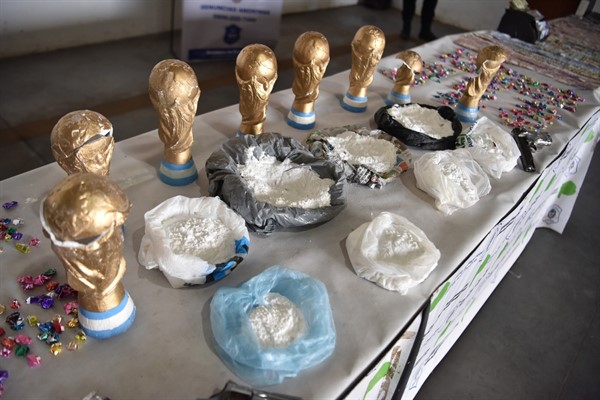It probably comes as no surprise that most of the world’s cocaine is produced in just three countries: Bolivia, Peru and Colombia. It is also probably no surprise that the biggest consumer markets for cocaine are in the United States and Europe. But after decades of media coverage of the violent turf wars over northward cocaine-trafficking routes through Central America and Mexico, it may spark interest to learn that South America’s Southern Cone countries have become the region’s new battleground for organized crime.
Ports in Chile, Argentina and Uruguay, in particular, have become prized turf for drug-trafficking criminal gangs for two main reasons. Containers shipped from Colombia, Ecuador and Brazil are routinely searched for drugs—at their ports of embarkation, but especially at their ports of destination—creating the need for new dispatch points. And the shipping routes from these Southern Cone ports bypass increasing interdiction efforts in the Caribbean and North Atlantic, thereby guaranteeing cocaine pipelines to the U.S. and Europe.
This move southwards has brought with it disturbing ramifications for countries usually considered some of Latin America’s safest.

